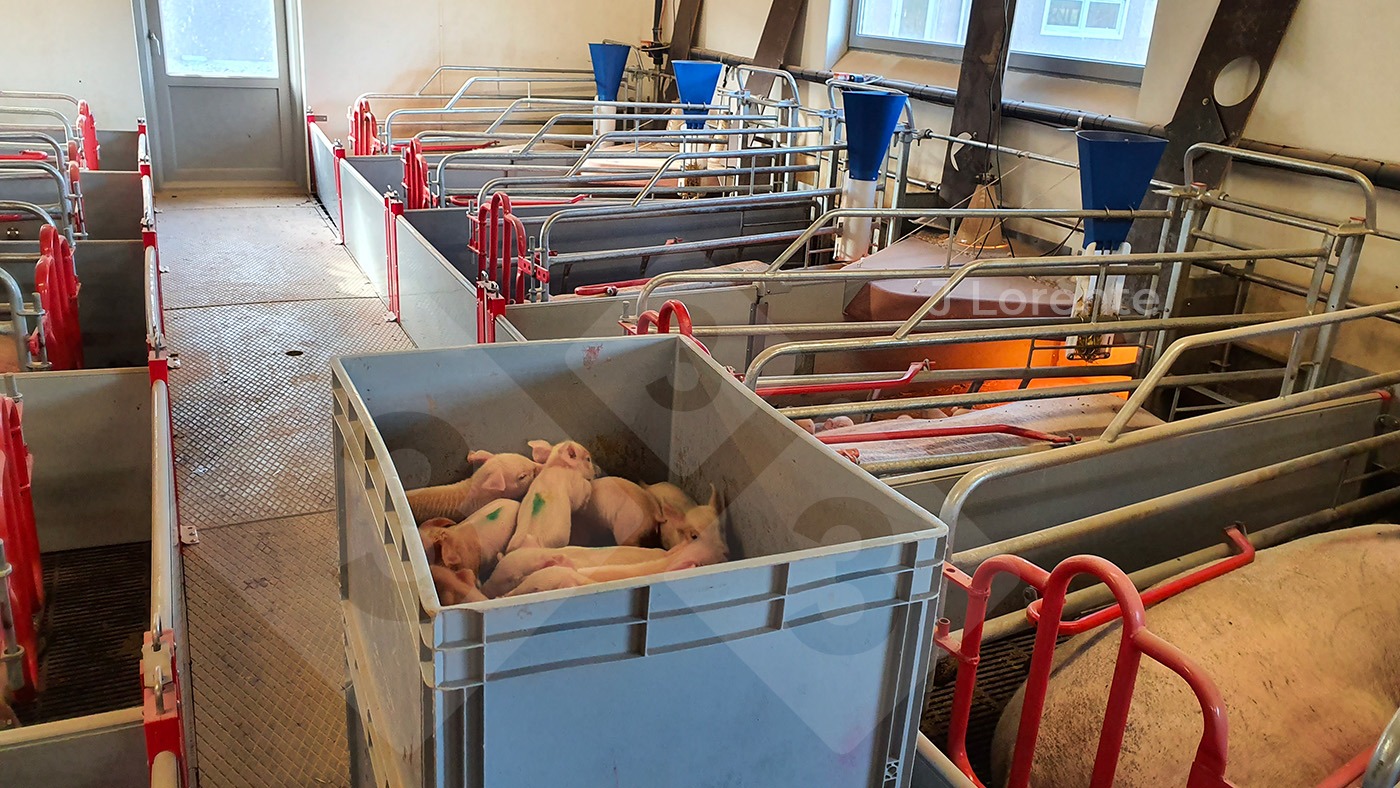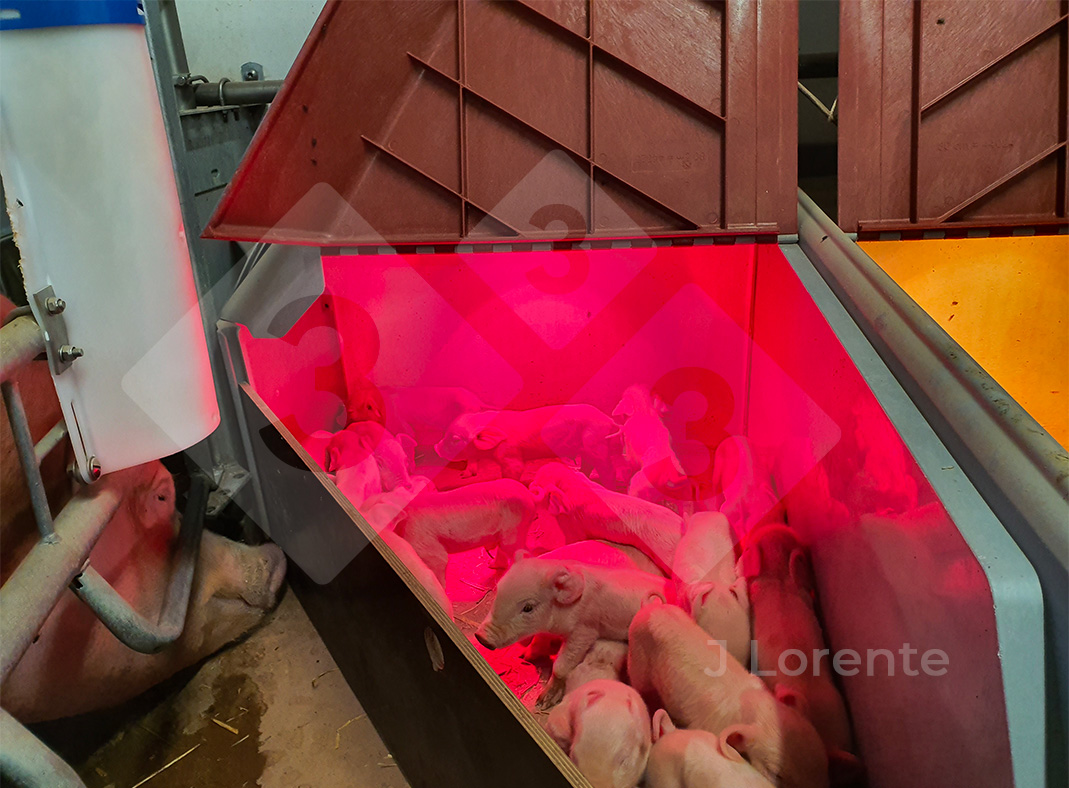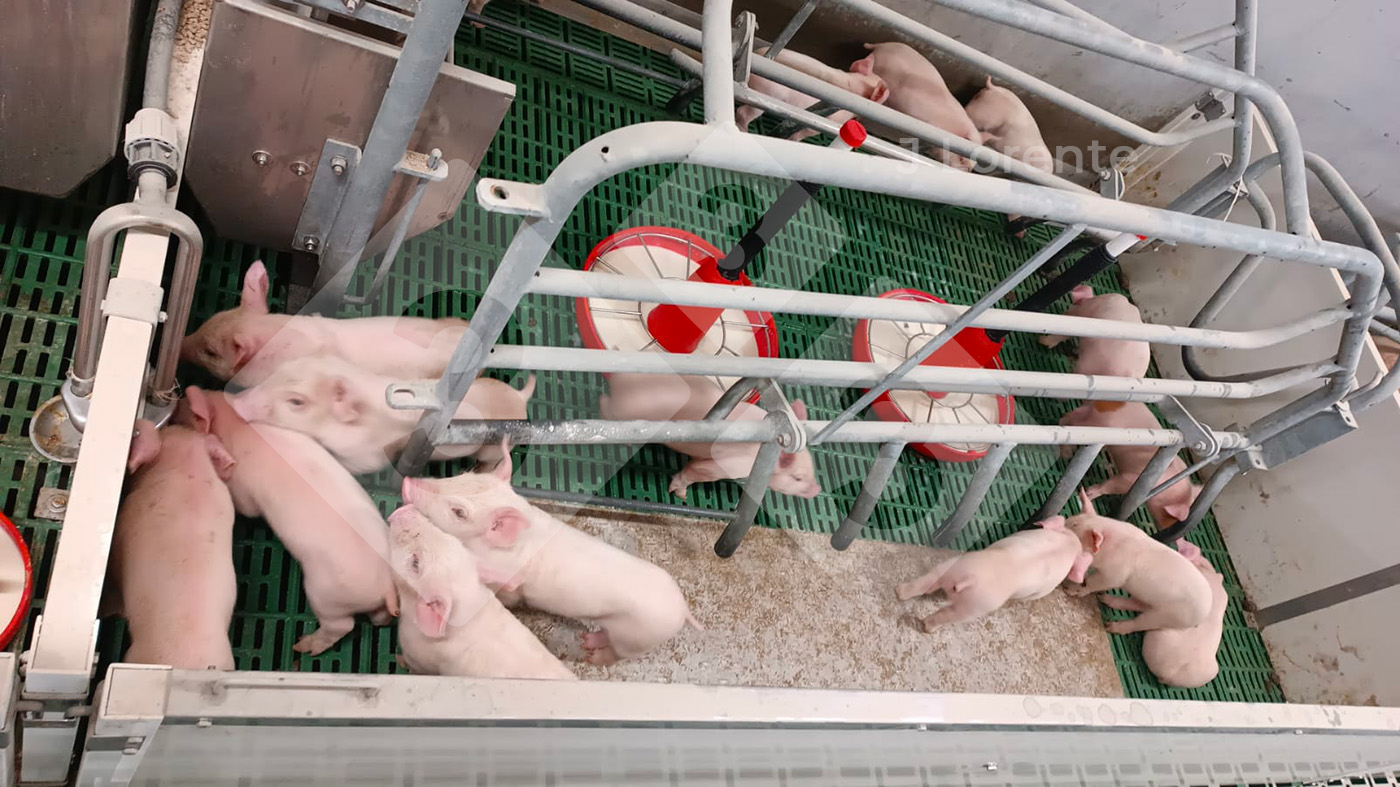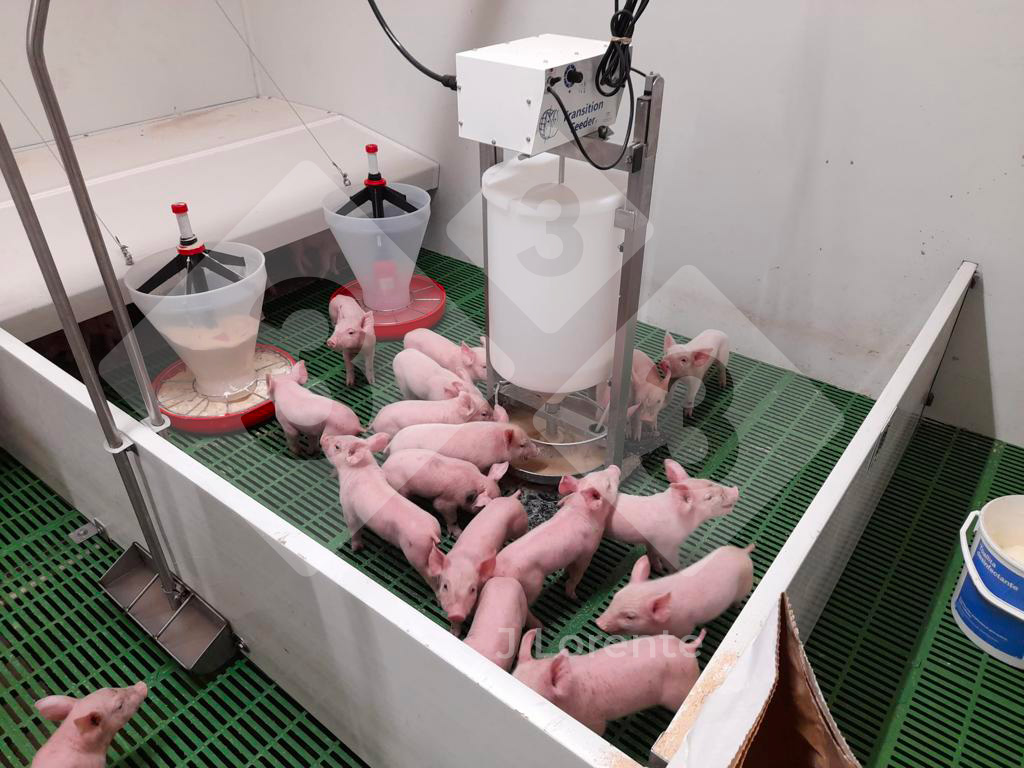Cross fostering and nurse sows (II): How to do the movements?
07-Jul-2025 (ago 5 months 24 days)
In the previous article, we talked about the basic rules for moving piglets in the farrowing room when we're working with highly prolific sows and have a lot of piglets to manage.
Once we are clear on these basic rules we will focus on moving the surplus piglets, which will force us to use some nurse sows.
When we talk about using nurse sows, we have two ways of approaching this on farms:
- Leave open spaces in the farrowing room
- Move litters ahead to create space
To better understand each of these cases, we have prepared an explanatory video, but in addition to this video we need to take into account several important aspects of each case:
Leave open spaces in the farrowing room
In the room where sows are farrowing, we will leave the necessary empty spaces to be able to do this movement. The number of open spaces to leave will be determined by:
- The prolificacy of the sows.
- The ability we have on each farm to maximize the number of piglets that each dam can rear herself. The better we work on sow feeding and management, the more piglets they will be able to raise, and therefore the fewer nurse sows we will need and the fewer empty spaces we will have to leave.
We have to keep in mind that to leave these spaces we must properly calculate the number of weekly matings along with our farrowing rate so as not to leave too many or too few spaces.
As we see in the video, in the room where we have the open spaces and the farrowing sows, we will look for surplus piglets from the sows that have already farrowed, always complying with the rule of moving piglets 24-36 hours after farrowing. To decide how many surplus piglets there are, we must decide how many piglets each sow can raise; it is good to write this down prior to farrowing to be more efficient. We can review this step in this article.
The following recommendations should always be followed when moving the piglets:
- Do so as quickly as possible:It is better to carefully analyze the movements to be performed, write them down and do them directly.
- Ensure that the piglets do not lose heat and are comfortable: for this purpose, we can use specific transport boxes which we saw in the previous article.

- Have a space ready to receive them with a heat source and if possible a nesting area to be able to enclose them all in a warm area while we bring their new dam.

To raise these piglets that we have grouped, we will look for one or more sows that farrowed 3 - 5 days ago to be our "nurse sows". These sows must meet the following requirements:
- Be raising good litters.
- Have at least the same number of piglets as those they are going to foster.
- Have a nipple size that is appropriate for the new piglets.
- Have good body condition.
To cover the space left by these sows, to be able to raise their litters, and to continue the movements, we will follow the steps seen in the video.
In the last step, when we leave the 21-day-old piglets weaned in the farrowing pen, we must follow the following recommendations:
- Leave the piglets with one or two heat sources if necessary as they have lost the warmth of their dam.
- Water must be always available.
- They should already be eating some dry feed if we do “creep feeding” but in addition to this feed, we can leave them with artificial milk or some milk replacer.
 Bumping up litters
Bumping up litters
We will again follow the steps shown in the video, making an early weaning of the piglets that are ready for it to allow us to release their dam so that she can act as a nurse sow. We will always keep in mind the following:
- Piglets can be left in the farrowing pen following the rules discussed above and taken off the farm with the following week's weaning.
- The other option is to take them to an area of the farm that is set up for these weaned piglets, which should have:
- Heating sources (heat lamps or underfloor heating) and preferably a nesting system to improve comfort.
- Water sources that the piglets can access easily, at least one for every 10 piglets.
- Systems that allow artificial milk to be provided if necessary.
- Feeding dishes specifically for young piglets.
- If possible, a system that allows milk replacer or gruel or wet/dry feed that encourages piglets to consume it.
 Cost of the systems
Cost of the systems
To conclude the article, we will share a study conducted by Thinkingpig comparing different nurse sow systems. The study was conducted on 1600 animals, 400 in each study group, in a 28-day lactation system:
Table 1. The economic impact of different farrowing room management systems. Source: Thinkingpig 2015.
| Type of system | Weaning weight (kg) | Cost of piglet at weaning (€) | Final cost (€) | Cost/kg (€) | Difference (€/kg) |
|---|---|---|---|---|---|
| No nurse sows | 7 | 20.67 | 101.68 | 1.057 | +0.046 |
| No nurse sows + suplemental milk | 7.3 | 21.63 | 102.64 | 1.011 | 0 |
| Bumping up litters | 5.6 | 19.51 | 100.52 | 1.170 | +0.159 |
| Leave empy spaces | 6.6 | 22.35 | 103.36 | 1.150 | +0.139 |
As we can see in the study, the two systems in which no sows were used as nurse sows obtained the best cost at the time the animals left to market at 20 weeks, reinforcing the argument that our objective should always be keeping the maximum number of piglets with their dams.
The keys to these results were the number of farrowings per sow per year in the systems that did not use nurse sows and the weaning weights because all piglets were weaned at 28 days.
Between the two systems that used nurse sows, the cost of production was better in the system that leaves open spaces as this allowed better weaning weights than the system that moves litters ahead. Although the number of piglets produced per sow per year was higher in the system that moves litters, due to the lower increase in lactation days, this did not compensate for the lower weaning weights.
In this article, we have tried to understand how to create nurse sows. They must be considered a necessary tool to be able to manage the number of piglets from highly prolific sows, but our goal should always be to maximize the number of piglets that each dam can rear and wean herself.
